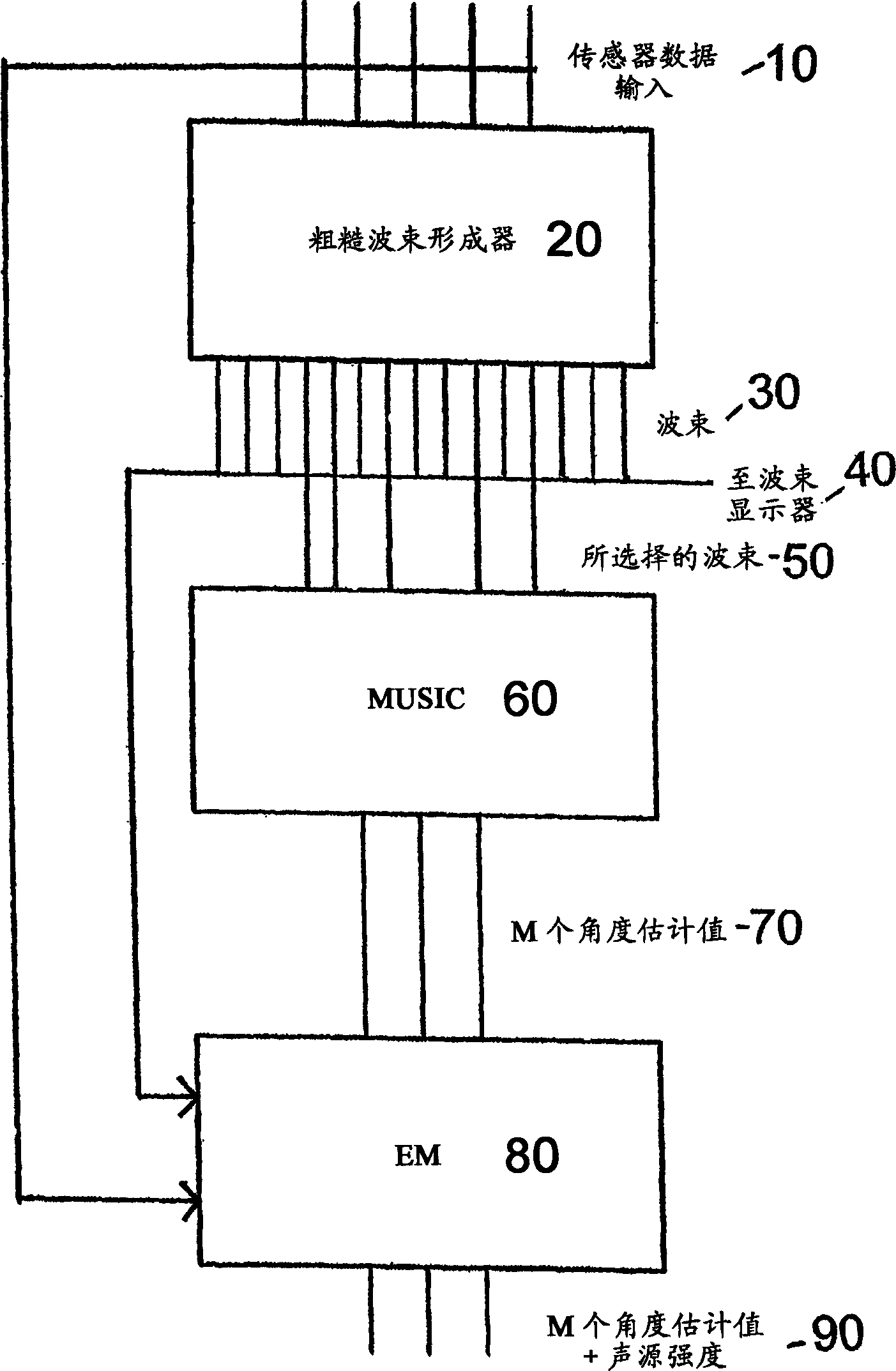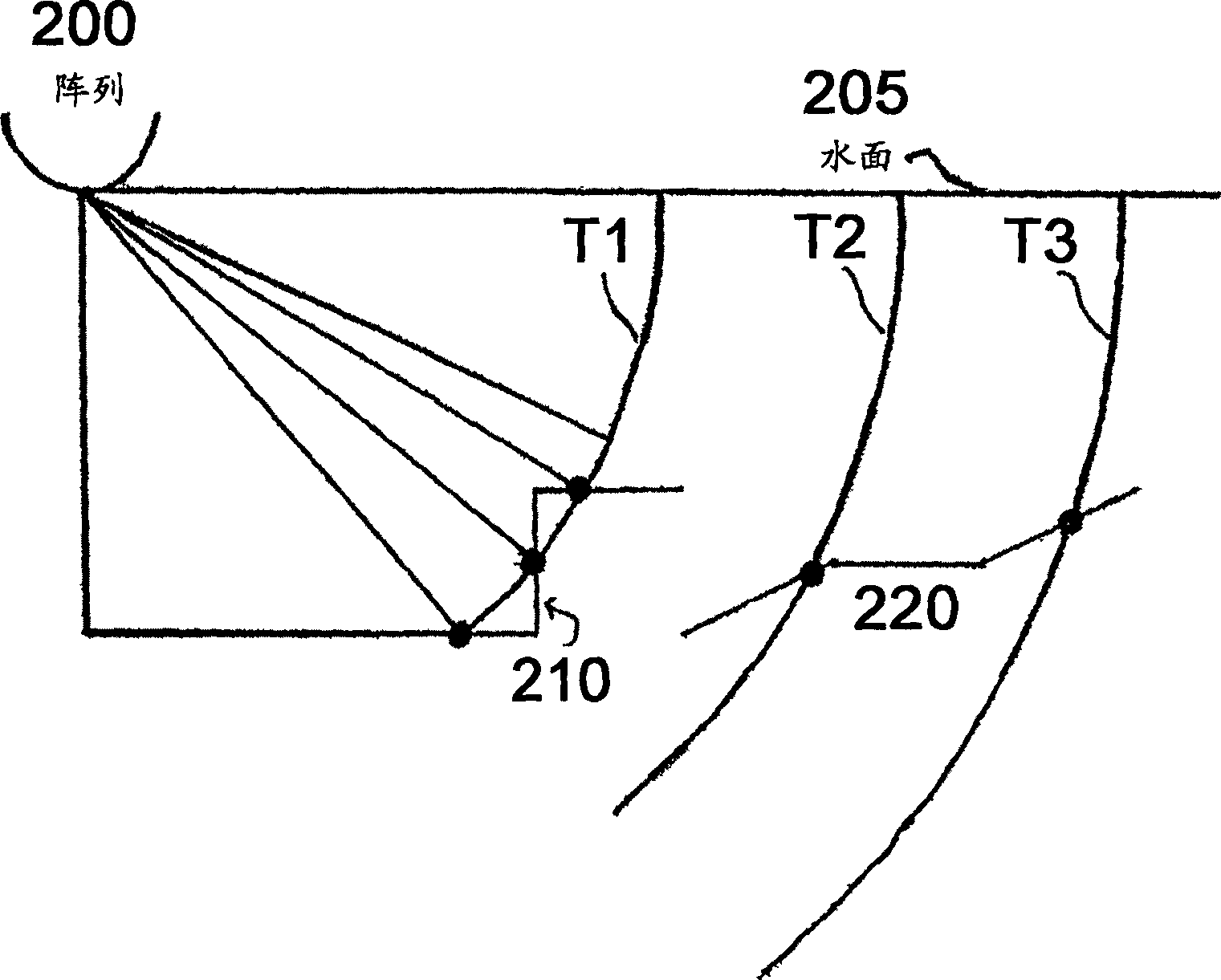Resolving directional information in sonar arrays
A directivity, array technology, applied in the re-radiation of sound waves, direction finders using ultrasonic/sonic/infrasonic waves, sound-producing instruments, etc., can solve the problem of poor public impression, inability to distinguish more than one sound source, and no practical value. And other issues
- Summary
- Abstract
- Description
- Claims
- Application Information
AI Technical Summary
Problems solved by technology
Method used
Image
Examples
Embodiment Construction
[0023] The method for resolving directional information in the data stream received by the hydrographic array is based on the condition that the desired information is contained in the data stream from the array converter. So the problem is estimation, not blind application of algorithms.
[0024] see first figure 1 , the input is the raw data block 10 from the hydrophones of the hydrographic survey array. At each point in time when the signal is sensed, block reception is performed. A "coarse" beam 30 is formed at 20 using a linear combination of the sensor (complex) time series. Beamforming weights are specific to the array configuration, sensor placement, individual sensor directivity, and transmission pulse details including temporal envelope. The beams are "coarse" because there are 180 overlapping beams, each of which has a resolution of about 2 degrees, and they do not have sufficient resolution for hydrographic measurements. These beams can be displayed 40 to the u...
PUM
 Login to View More
Login to View More Abstract
Description
Claims
Application Information
 Login to View More
Login to View More - R&D
- Intellectual Property
- Life Sciences
- Materials
- Tech Scout
- Unparalleled Data Quality
- Higher Quality Content
- 60% Fewer Hallucinations
Browse by: Latest US Patents, China's latest patents, Technical Efficacy Thesaurus, Application Domain, Technology Topic, Popular Technical Reports.
© 2025 PatSnap. All rights reserved.Legal|Privacy policy|Modern Slavery Act Transparency Statement|Sitemap|About US| Contact US: help@patsnap.com


